Tucked away in Arkansas’ northeastern treasures, Horseshoe Lake whispers tales of ancient river meanderings and the rhythmic dance of aquatic life.
Born from the wandering paths of the mighty Mississippi River ages ago, this oxbow lake is not just a serene water body—it’s a vibrant stage showcasing a captivating drama of diverse fish species. Anglers, naturalists, and curious souls are drawn to its waters, where every ripple tells a story.
The Major Players: Common Fish Species
Before we proceed, it’s essential to understand Horseshoe Lake’s context. This 2,362-acre oxbow lake is one of Arkansas’s largest natural lakes. Oxbow lakes are created when a wide bend in a river becomes cut off from the main channel, leaving a U-shaped body of water.
Horseshoe Lake’s formation, while natural, has been supplemented over the years by human-made levees, helping maintain its water level.
Largemouth Bass
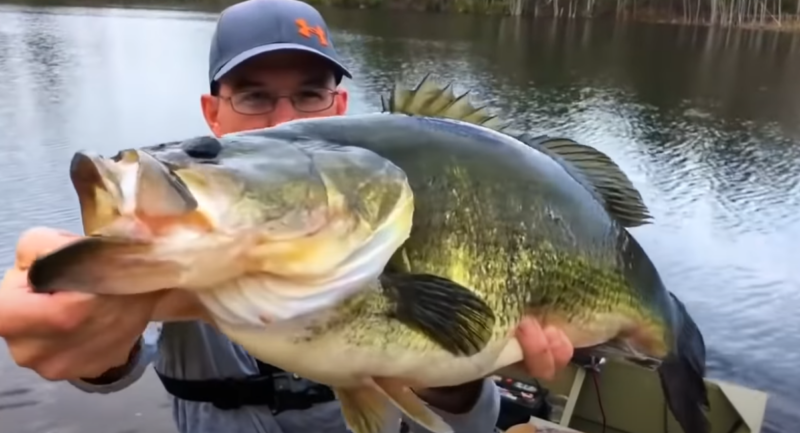
Scientific Name: Micropterus salmoides
Physical Characteristics: The Largemouth Bass exhibits a greenish to brownish body, with a series of dark, sometimes black, blotches forming a jagged horizontal stripe along each flank. The upper jaw of the Largemouth extends beyond the rear margin of the eye, distinguishing it from the Smallmouth Bass.
Habitat: Preferring warmer waters, Largemouth Bass opt for shallow areas with plenty of cover, such as submerged logs, vegetation, and rock outcroppings. However, they can adapt to a variety of water conditions, from clear ponds to murky reservoirs.
Diet: Their diet primarily consists of smaller fish, shrimps, insects, and even small aquatic birds or mammals. They use a sudden burst of speed to ambush their prey.
Life Cycle: Spawning usually occurs in spring when water temperatures reach between 60°F-75°F. Females lay thousands of eggs in nests made by males, who then guard the eggs and young fry against predators.
Bluegill
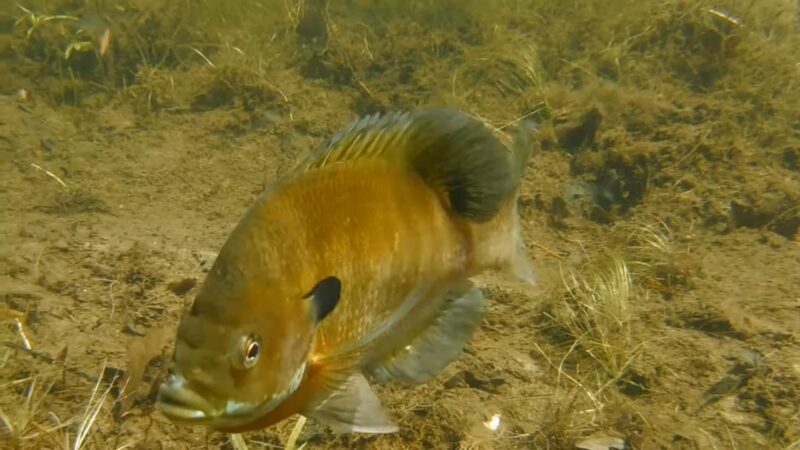
Scientific Name: Lepomis macrochirus
Physical Characteristics: Bluegills have a relatively rounded, deep body shape with a long, pointed pectoral fin. Their colors can vary, but they often possess a blend of blues, yellows, and greens.
Habitat: Typically found in the shallows of freshwater lakes and ponds, they prefer habitats with abundant vegetation to provide shelter from predators and rich feeding grounds.
Diet: Bluegills are opportunistic feeders. While they primarily eat insects and zooplankton, they won’t shy away from vegetation, especially during the colder months when insects are scarce.
Life Cycle: Spawning begins in late spring and can continue into summer. Like the Largemouth Bass, male Bluegills make and guard nests, ensuring the next generation’s safety.
Crappie
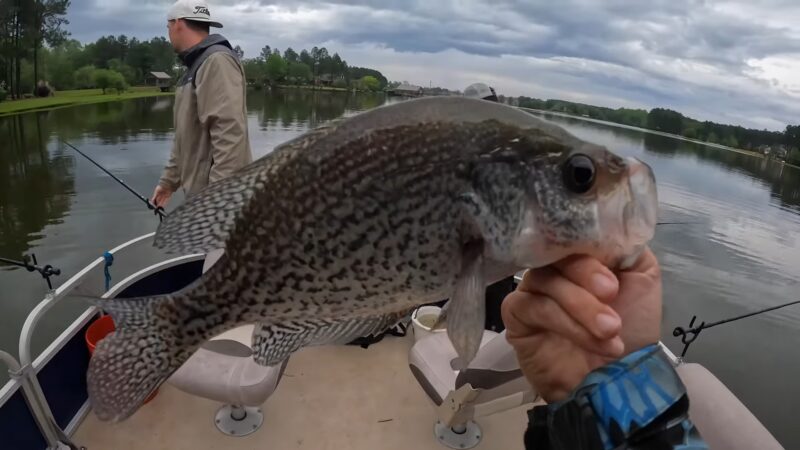
Scientific Names: Pomoxis annularis (White Crappie) and Pomoxis nigromaculatus (Black Crappie)
Physical Characteristics: While both species possess a similar shape and size, the Black Crappie is darker with a speckled pattern, whereas the White Crappie has vertical bars along its body.
Habitat: Crappies prefer still waters and are often found in ponds, lakes, and backwaters of rivers, hovering around submerged objects or vegetation.
Diet: Their diet mainly comprises small fish and insects. Crappies use their superior vision to hunt in both murky and clear waters.
Life Cycle: Crappies spawn in spring when water temperatures rise between 58°F-64°F. Like other sunfish, males construct and guard nests.
Catfish
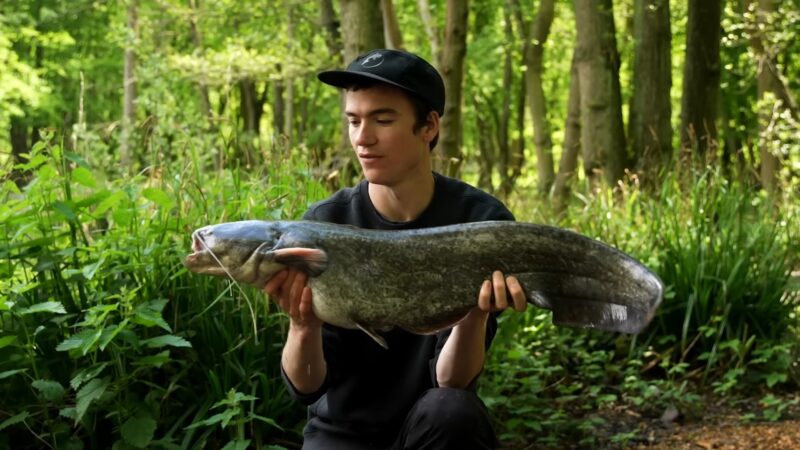
Scientific Names: Ictalurus punctatus (Channel Catfish) and Pylodictis olivaris (Flathead Catfish)
Physical Characteristics: Catfish are easily recognized by their whisker-like barbels, which they use to detect food in dark or muddy waters. The Channel Catfish possesses a slender body with a deeply forked tail, while the Flathead is bulkier with a slightly squared tail.
Habitat: They are often found in deeper sections of freshwater habitats, preferring areas with slow-moving water and soft bottoms.
Diet: While Channel Catfish are omnivorous, feeding on insects, crustaceans, and plants, Flathead Catfish are more predatory, hunting other fish.
Life Cycle: Catfish spawn in late spring to early summer, with males guarding nests in dark, secluded areas like under logs or in crevices.
Rare Gems: Less Common Fish Species
While Horseshoe Lake is renowned for the aforementioned species, it also houses less common but equally fascinating fish.
Bowfin
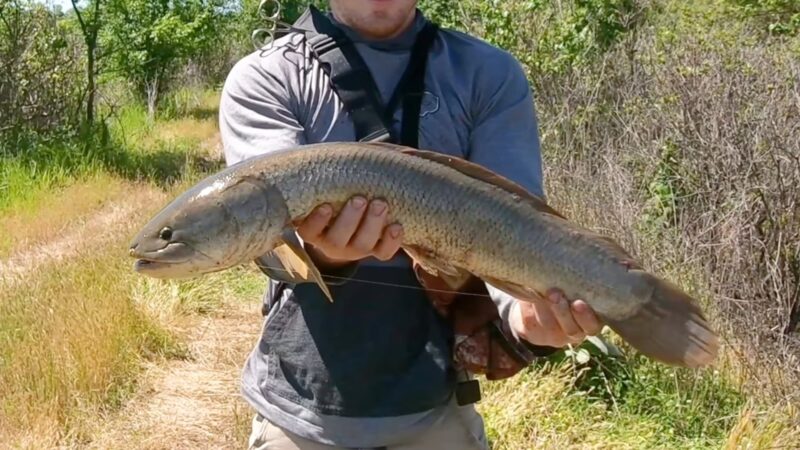
Scientific Name: Amia calva
Physical Characteristics: The Bowfin stands out with its elongated body, broad head, and rounded tail. Males often sport a dark spot at the base of the tail, which can be mistaken for an eye by predators.
Habitat: Bowfins prefer slow-moving, vegetated waters. You can find them in swamps, backwaters, and muddy ponds where they often lurk among submerged vegetation.
Diet: They primarily eat fish, but their diet can include crayfish, insects, and other invertebrates. Bowfins have a specialized air bladder, allowing them to gulp air and survive in oxygen-depleted waters.
Life Cycle: Bowfins spawn in spring to early summer. Males construct nests in shallow waters and aggressively guard both the eggs and the hatched fry.
Fun Fact: Bowfins are one of the few fish species that can breathe both water and air, thanks to a primitive lung alongside their gills.
Gar
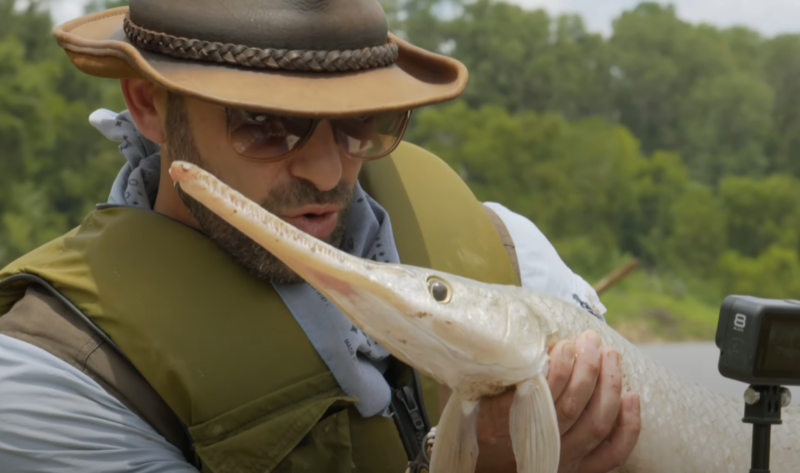
Scientific Names: For the species mentioned – Lepisosteus osseus (Longnose Gar) and Lepisosteus platostomus (Shortnose Gar)
Physical Characteristics: Gars are easily recognized by their elongated bodies, diamond-shaped interlocking scales, and long jaws filled with sharp teeth. The Longnose Gar, as its name suggests, has an especially extended snout compared to other gar species.
Habitat: Preferring slow-moving or stagnant waters, gars are commonly found in backwaters, lakes, and bayous with abundant vegetation.
Diet: Their diet mainly comprises smaller fish, which they ambush with a rapid sideways thrust of their snout, impaling their prey on their sharp teeth.
Life Cycle: Spawning occurs in late spring to early summer in shallow waters. Interestingly, their eggs are toxic to many animals, including humans.
Fun Fact: Gars can gulp air and have vascularized swim bladders, allowing them to survive in waters with low oxygen levels.
Buffalo Fish
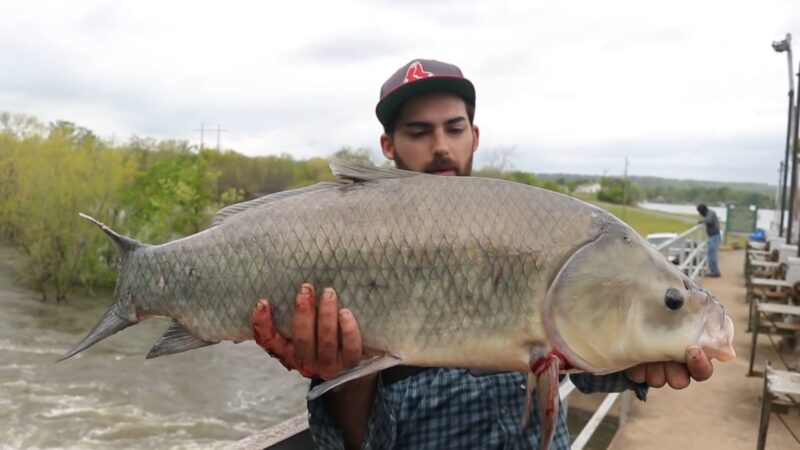
Scientific Names: Ictiobus cyprinellus (Bigmouth Buffalo) and Ictiobus bubalus (Smallmouth Buffalo)
Physical Characteristics: Buffalo Fish have a robust, laterally compressed body. The Bigmouth Buffalo has a larger, terminal mouth while the Smallmouth Buffalo’s mouth is more ventral and smaller.
Habitat: Buffalo Fish are typically found in large rivers, reservoirs, and lakes, particularly in areas with slow-moving water.
Diet: Being filter feeders, these fish primarily consume zooplankton, phytoplankton, and detritus. They have specialized gill rakers that allow them to sift through water for food.
Life Cycle: They spawn during spring in shallow waters, with eggs that adhere to submerged objects. Unlike many fish species, Buffalo Fish do not construct nests or provide parental care to their offspring.
Fun Fact: The Bigmouth Buffalo has recently been discovered to live up to 112 years, making them one of the longest-lived freshwater fish species.
Fishing Tips and Best Practices
If you’re an angler keen on exploring Horseshoe Lake, here are some useful tips:
- Season Matters: Spring is an ideal time for fishing Crappie during their spawning season. Largemouth Bass are also active during spring and early summer.
- Tackle Selection: For smaller fish like Bluegill, lightweight tackle is ideal. For more massive species like Catfish and Bass, medium to heavyweight tackle with robust line strength is recommended.
- Safety First: Always inform someone when you’re heading out to fish, especially if you’re going alone. Make sure you’re equipped with safety gear like life vests.
Preserving the Ecosystem
Horseshoe Lake, like many freshwater bodies, faces challenges due to pollution, habitat degradation, and overfishing. While the lake remains a thriving ecosystem, it’s crucial to practice sustainable fishing methods:
- Follow Bag Limits: Adhere to the state’s fishing regulations regarding the number and size of fish you can keep.
- Catch and Release: If you’re fishing for fun and not for consumption, consider releasing the fish back into the lake.
- Avoid Littering: Ensure you don’t leave behind any garbage, especially non-biodegradable items like plastic.
FAQs
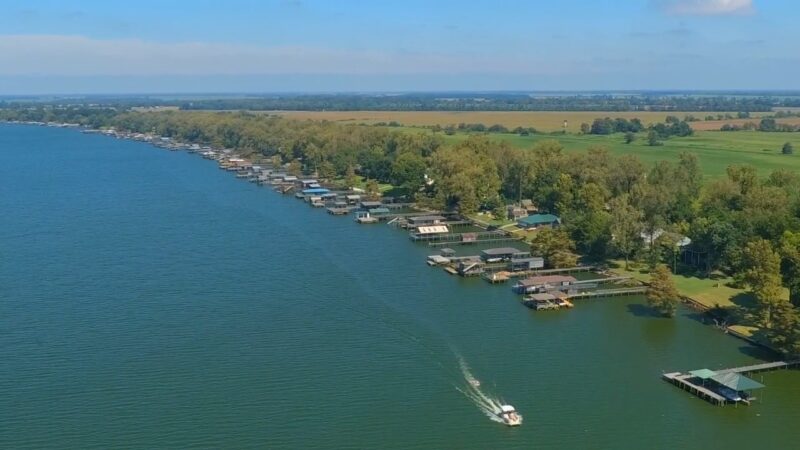
How has the biodiversity of Horseshoe Lake changed over the years?
Over time, natural events and human activity can influence lake ecosystems. While Horseshoe Lake has retained many of its native species, there have been introductions of non-native species, changes in aquatic vegetation, and shifts in population dynamics. Continuous research and monitoring help to understand these changes and implement measures to protect the lake’s rich biodiversity.
Are there any endangered or protected fish species in Horseshoe Lake?
Yes, like many freshwater habitats, Horseshoe Lake can be home to endangered or protected species. The specific list can change over time, so it’s vital to consult local wildlife authorities or recent environmental reports for the most up-to-date information.
What’s the best time of year to fish in Horseshoe Lake?
While fishing is popular year-round, the best seasons often coincide with fish spawning periods, typically spring and early summer. However, specific peak times can vary depending on the fish species you’re targeting.
Are there any restrictions or licenses required for fishing in Horseshoe Lake?
Yes, anglers usually need a valid Arkansas fishing license. There might also be specific regulations concerning bag limits, size limits, and fishing methods, which aim to promote sustainable fishing and conservation. Always check with local authorities before embarking on your fishing adventure.
Are there guided fishing tours available for Horseshoe Lake?
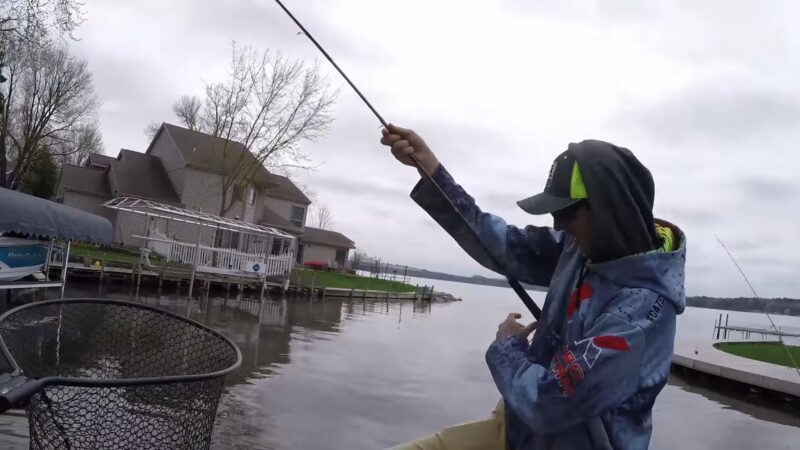
Absolutely! Several local outfitters and experienced anglers offer guided fishing tours. These tours can provide valuable insights into the lake’s hotspots, effective techniques, and the ecology of the fish species present.
Besides fishing, what other recreational activities can be enjoyed at Horseshoe Lake?
Horseshoe Lake offers a myriad of recreational opportunities, from bird watching and boating to swimming and picnicking. Its picturesque environment makes it a great destination for both relaxation and adventure.
Conclusion
Horseshoe Lake in Arkansas is a treasure trove of aquatic biodiversity. From popular game fish like Largemouth Bass and Crappie to rare species like Bowfin and Gar, the lake offers a fascinating glimpse into freshwater ecology.
As we revel in its beauty and resources, it’s also our collective responsibility to ensure its preservation for generations to come. Whether you’re an angler, naturalist, or simply a curious visitor, Horseshoe Lake promises a unique and enriching experience.
